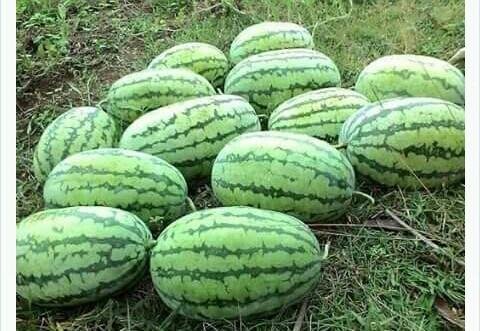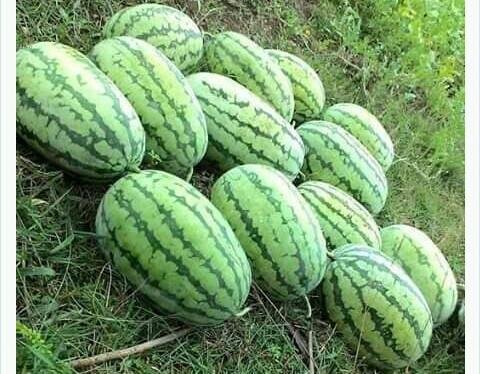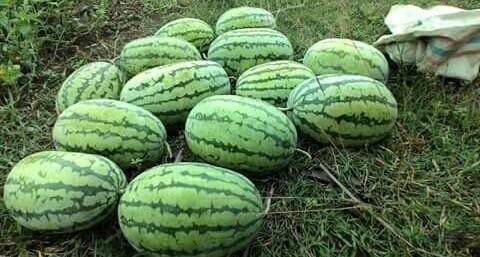WATERMELON OR POTS
Watermelons or pots (Citrullus lanatus, the cucumber-cucumber or Cucurbitaceae) are vines originating from the desert half of southern Africa. This plant is still related to pumpkin (Cucurbitaceae), melon (Cucumis melo) and cucumber (Cucumis sativus). Watermelon is usually harvested fruit to be eaten fresh or made juice. Watermelon seeds are dried and roasted can also be eaten contents (cotyledon) as a quaci.
Watermelon (edible ingredients) Nutritional value per 100 g (3.5 oz) Energy127 kJ (30 kcal) Carbohydrate7.55 g- Gula6.2 g- Food fiber0.4 gLemak0.15 gProtein0.61 gAir91.45 gVitamin A (Vitamin B1) 0.017 mg (1%) Niacin (Vit B3) 0.178 mg (1%) Pantothenic acid (B5) 0.221 mg (4%) Vitamin B60.045 mg (3%) Folate (Vit B9) 3 μg (1%) Vitamin C8.1 mg (14%) Calcium7 mg (1%) Iron0.24 mg (2%) Magnesium10 mg (3%) Phosphorus 11 mg (2%) Potassium112 mg (2%) Zink0.10 mg (1%) Percentage refers to the recommendation of the United States for adults.
Like members of other cucumber-cucumber tribes, this plant habitus propagates but it can not form an adventitious root and can not climb. Rampatan reach can reach a dozen meters.
The leaves are grooved at the edges. The flowers are perfect, yellow, small (3cm in diameter). Watermelon is andromonoecious monoklin, which has two types of flowers on one plant: male flowers, which have only stamens, and sissy / hermaphrodite flowers, which have stamens and pistils (pistillum). Sissy flowers can be recognized from the presence of fruit (ovary) at the base of the flower in the form of oval enlargement.
Watermelon has a hard skin, dark green or light green with dark green rows. Depending on the cultivars, the flesh is watery red or yellow.
This plant is quite resistant to drought, especially when it has entered the formation of fruit.



Nice Post...I Miss them so much
Wish That Summer comes Fast...